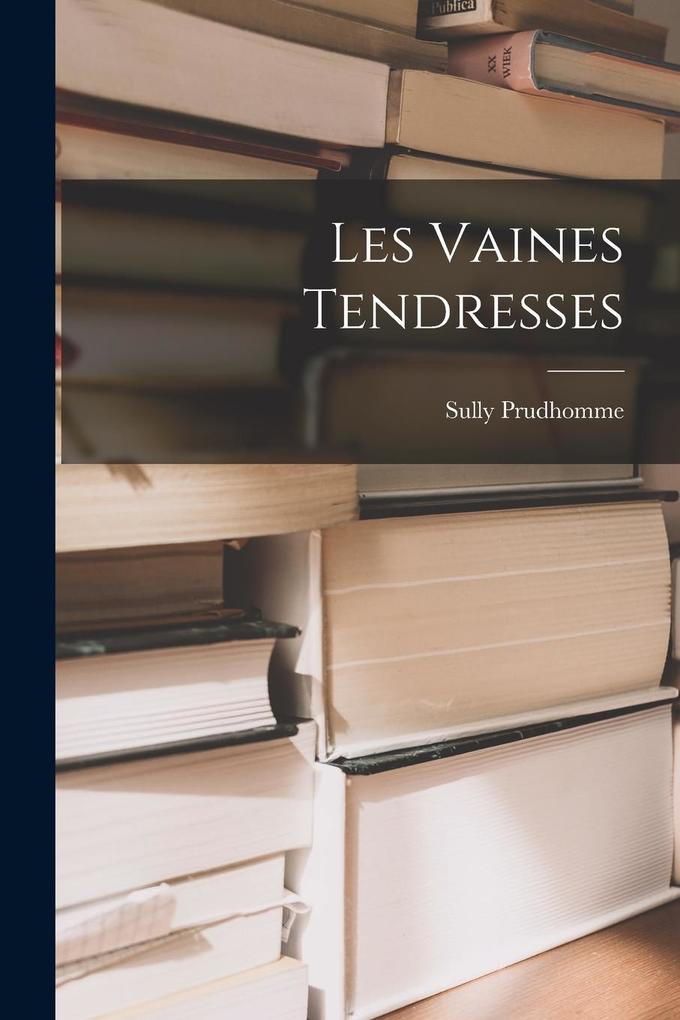
Zustellung: Di, 19.08. - Sa, 23.08.
Versand in 2 Wochen
VersandkostenfreiBestellen & in Filiale abholen:
Les Vaines Tendresses est un recueil de poé sie profondé ment é mouvant de Sully Prudhomme, premier lauré at du prix Nobel de litté rature. Publié en 1875, ce livre explore avec finesse les thè mes de l'amour non partagé , de la mé lancolie, et des é lans de tendresse voué s à l'é chec. À travers des vers d'une grande musicalité , Prudhomme donne voix aux souffrances silencieuses, aux espoirs dé ç us et à la fragilité du coeur humain.
Influencé par le mouvement parnassien, il marie forme rigoureuse et é motion contenue, tout en laissant transparaî tre une sensibilité profondé ment moderne. Chaque poè me est une mé ditation sur l'é phé mè re, l'illusion, et les contradictions du sentiment amoureux. En quê te de vé rité à travers l'é motion, Prudhomme dresse un tableau dé licat de la condition humaine, où le dé sir de beauté se heurte au silence du ré el.
Ce recueil est un incontournable pour les amateurs de poé sie franç aise classique, mais aussi pour tous ceux qui recherchent une ré flexion subtile et é lé gante sur les é lans du coeur. This work has been selected by scholars as being culturally important, and is part of the knowledge base of civilization as we know it.
This work is in the "public domain in the United States of America, and possibly other nations. Within the United States, you may freely copy and distribute this work, as no entity (individual or corporate) has a copyright on the body of the work.
This work has been selected by scholars as being culturally important, and is part of the knowledge base of civilization as we know it. This work was reproduced from the original artifact, and remains as true to the original work as possible. Therefore, you will see the original copyright references, library stamps (as most of these works have been housed in our most important libraries around the world), and other notations in the work.
This work is in the public domain in the United States of America, and possibly other nations. Within the United States, you may freely copy and distribute this work, as no entity (individual or corporate) has a copyright on the body of the work.
As a reproduction of a historical artifact, this work may contain missing or blurred pages, poor pictures, errant marks, etc. Scholars believe, and we concur, that this work is important enough to be preserved, reproduced, and made generally available to the public. We appreciate your support of the preservation process, and thank you for being an important part of keeping this knowledge alive and relevant.
Influencé par le mouvement parnassien, il marie forme rigoureuse et é motion contenue, tout en laissant transparaî tre une sensibilité profondé ment moderne. Chaque poè me est une mé ditation sur l'é phé mè re, l'illusion, et les contradictions du sentiment amoureux. En quê te de vé rité à travers l'é motion, Prudhomme dresse un tableau dé licat de la condition humaine, où le dé sir de beauté se heurte au silence du ré el.
Ce recueil est un incontournable pour les amateurs de poé sie franç aise classique, mais aussi pour tous ceux qui recherchent une ré flexion subtile et é lé gante sur les é lans du coeur. This work has been selected by scholars as being culturally important, and is part of the knowledge base of civilization as we know it.
This work is in the "public domain in the United States of America, and possibly other nations. Within the United States, you may freely copy and distribute this work, as no entity (individual or corporate) has a copyright on the body of the work.
This work has been selected by scholars as being culturally important, and is part of the knowledge base of civilization as we know it. This work was reproduced from the original artifact, and remains as true to the original work as possible. Therefore, you will see the original copyright references, library stamps (as most of these works have been housed in our most important libraries around the world), and other notations in the work.
This work is in the public domain in the United States of America, and possibly other nations. Within the United States, you may freely copy and distribute this work, as no entity (individual or corporate) has a copyright on the body of the work.
As a reproduction of a historical artifact, this work may contain missing or blurred pages, poor pictures, errant marks, etc. Scholars believe, and we concur, that this work is important enough to be preserved, reproduced, and made generally available to the public. We appreciate your support of the preservation process, and thank you for being an important part of keeping this knowledge alive and relevant.
Produktdetails
Erscheinungsdatum
26. Oktober 2022
Sprache
französisch
Untertitel
Sprache: Französisch.
Seitenanzahl
170
Autor/Autorin
Prudhomme Sully
Verlag/Hersteller
Produktart
kartoniert
Gewicht
245 g
Größe (L/B/H)
234/156/9 mm
ISBN
9781015456297
Bewertungen
0 Bewertungen
Es wurden noch keine Bewertungen abgegeben. Schreiben Sie die erste Bewertung zu "Les Vaines Tendresses" und helfen Sie damit anderen bei der Kaufentscheidung.










